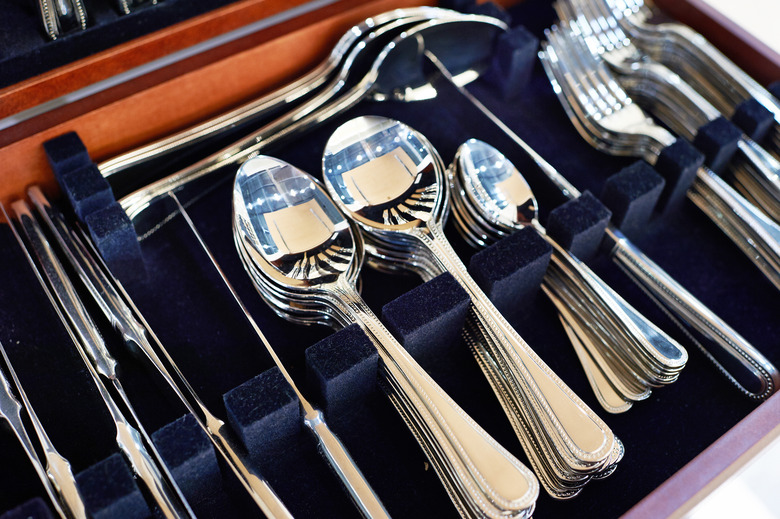Soup Spoons Vs. Dinner Spoons: What Exactly Is The Difference?
We may receive a commission on purchases made from links.
From their earliest clay, wood, and bone ancestors, spoons have evolved into an impressive array of sizes, materials, and shapes, each type with its own role to play on your table. Some pieces, such as soup spoons, are placed on the table only if soup is being served. Others, such as dinner spoons, can wear many hats — from soup to nuts and beyond. One of the major differences between the two is that soup spoons are made for eating soups, whereas dinner spoons may be used not only for eating soups but for eating a variety of other foods as well.
Here's what else to know about soup spoons versus dinner spoons.
What Is a Soup Spoon?
What Is a Soup Spoon?
Soup spoons, with their range of bowl depths and handle lengths, are designed specifically for eating soups. And just as there are several styles of soups, ranging from thin broths to chunky stews to thick, cream-based or pureed-vegetable soups, there are several styles of soup spoons, one of which is sure to be a perfect fit for the consistency and texture of the soup you're serving:
- Bouillon spoons have shallow, rounded bowls and handles that are usually 5 to 5 1/2 inches long. These spoons are suitable for the two-handled consomme cups in which clear soups with no solid ingredients are often served in formal settings.
- Chinese soup spoons, also known as Asian spoons, may vary in size somewhat and are most often made of ceramic or porcelain with short handles and flat, deep bowls that can hold plenty of broth and solid ingredients, like chunks of meat and vegetables. You can use chop sticks with a Chinese soup spoon to help maneuver solid ingredients into the bowl of the spoon.
- Cream soup spoons, also known simply as soup spoons, are geared toward soups with a creamy consistency, like pureed cauliflower bisque. Cream soup spoons usually have deep, round bowls with long handles and may measure between 6 to 8 inches in length, depending on the manufacturer and flatware pattern.
- Gumbo or chowder spoons are around 7 inches long with large, round, shallow bowls that are designed for eating thick soups that contain lots of meats, vegetables, and/or other chunky ingredients.
- Teaspoons, which you may not think of as soup spoons, generally measure 5 1/2 to 6 1/4 inches long and are sometimes used in place of bouillon spoons when bouillon or consomme is served in cups. In casual dining, teaspoons are used in a multipurpose fashion with hot coffee and tea and a variety of solid foods, including yogurt, cereals, desserts, and eggs in eggcups.
What Is a Dinner Spoon?
What Is a Dinner Spoon?
At 6 1/2 to 7 1/2 inches long, dinner spoons, also known as place spoons, are larger than teaspoons but smaller than tablespoons, which are typically used as serving pieces. In modern flatware sets, the teaspoon stands in for the dinner spoon, which you may find more often in older sets of flatware. With a relatively deep, oval bowl, multifunctional dinner spoons can be used for eating soups, cereals, desserts, chili, ravioli, and more.
Composition of Spoons and Other Types of Flatware
Composition of Spoons and Other Types of Flatware
Stainless steel spoons and other pieces of flatware are made from one of four grades of stainless steel composed of differing percentages of chromium and nickel:
- 18/10 flatware: 18 percent chromium and 10 percent nickel.
- 18/8 flatware: 18 percent chromium and 8 percent nickel.
- 18/0 flatware: 18 percent chromium and no nickel.
- 13/0 flatware: 13 percent chromium and no nickel.
Of the four, 18/10 flatware is the most expensive and considered the highest-quality stainless because of its corrosion resistance and shine.
Formal flatware sets may be made of solid silver but can also be made of silver- or gold-plated base metals, such as brass or nickel. Solid silver and high-quality plated sets are typically more expensive than stainless steel flatware sets.
